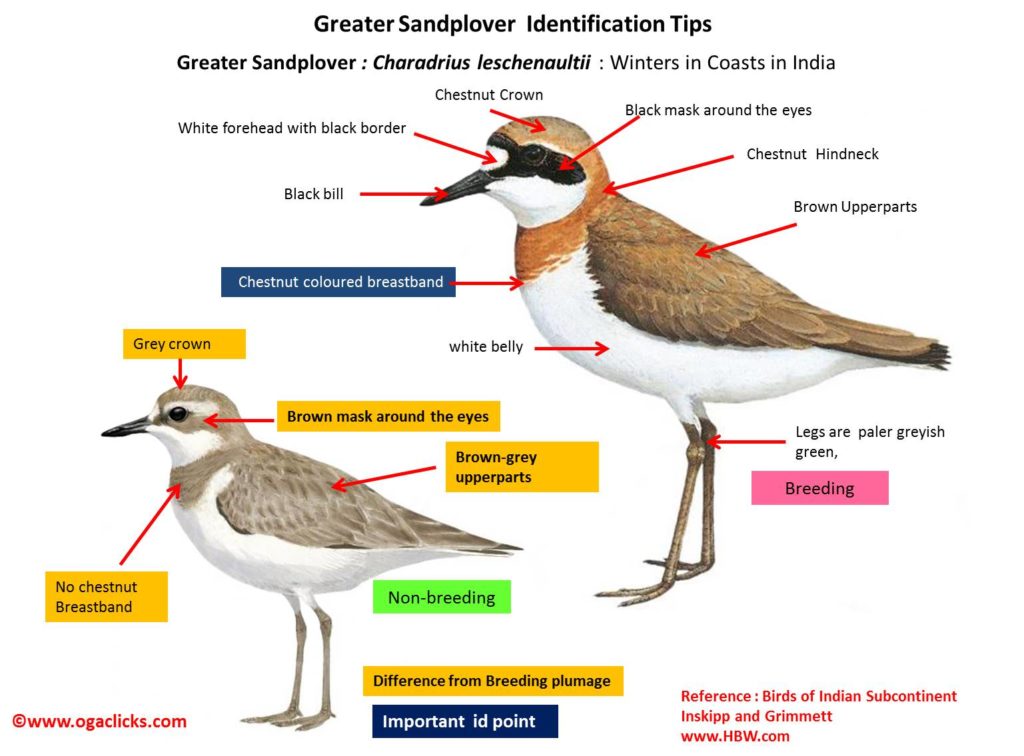
Great Sand Plover Charadrius leschenaultia
Etymology:
- Charadrius : Greek word kharadrios for unknown plain-coloured nocturnal bird that dwelt in ravines and river valleys
- Leschenaultia : Named after French botanist Jean Baptiste Louis Claude Théodore Leschenault de laTour (1773–1826)
Vernacular names: Guj: Rataltitodi, Motidhongili, Ta: Anna mandai, Mar: MothaChikhlya
Distribution in India: Widespread winter visitor in coastal region of India
Description: Size of 22-25 cm.Medium-sized plover; has a larger, broader head, larger bill, longer legs and somewhat paler upperparts; legs paler greyish green. In flight shows white wing bar that broadens towards outer primaries, white rump-sides and white-tipped tail with dark sub-terminal band, and toes reach beyond tail tip. Male has narrower and more sharply demarcated rufous breast band. Female has black on head dark grey-brown, no dark stripe on forehead, less extensive chestnut coloration on breast band. In non-breeding plumage, they have less rufous head; male doesn’t have the black stripe on its face and has darker legs.
Habitat: It is found during breeding season predominantly found in deserts or semi-deserts, at lower altitude. During non-breeding season, mainly found on coast, on sheltered sandy, shelly or muddy beaches and estuaries, with large inter-tidal mudflats or sandbanks; also reefs, rocky islands and dunes; occasionally salt lakes and brackish swamps; usually roosts on sandbanks and spits
Food Habits:
They eat mainly beetles, also molluscs (e.g. snails), worms, crustaceans (e.g. shrimps and crabs), other insects and their larvae (e.g. termites, midges and ants), and occasionally lizards. It forges using run-and-pause technique
Breeding Habits: They breed in April- May in Central Asia. Male advertises territory with song-flight display. The nest a shallow scrape in ground, variably lined with plant fragments, situated in the open or among or close to low vegetation. They lay a clutch of 2-4 eggs . They are single-brooded, but replacement clutches laid after egg loss. The incubation is done by both adults for at least 24 days, probably starting with last egg; chick tended by both parents, with brood often split between them; fledging at least 30 days.